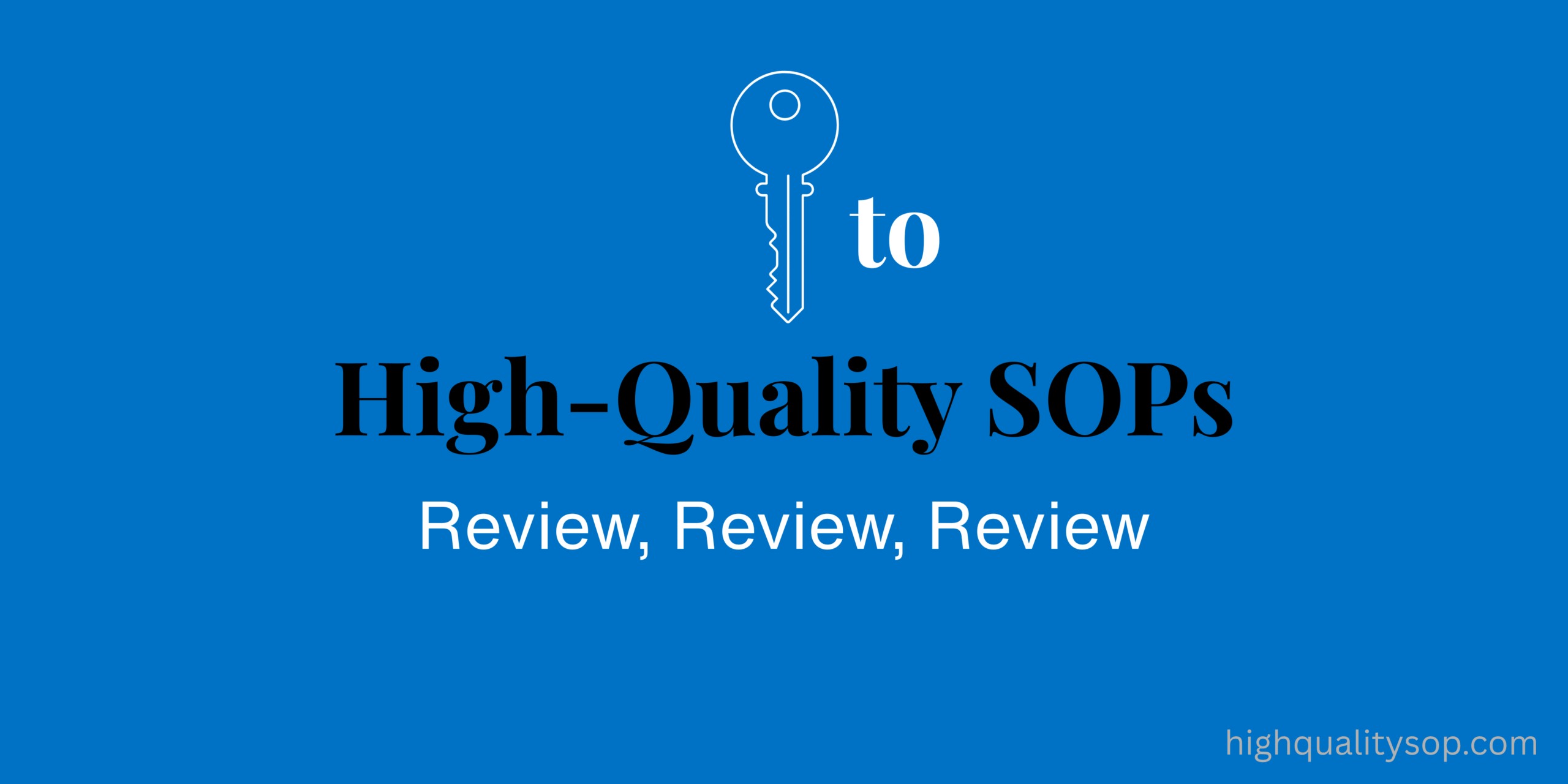Key to High-Quality SOPs: Review, Review, Review

SOPs are often long documents packed with technical detail. No matter how skilled you are at technical writing, expecting the first draft to be near final is unrealistic. It’s merely a starting point—a rough version that must be repeatedly refined. That’s not a flaw; it’s the right process. The true quality of an SOP emerges through multiple reviews and revisions. Skipping this stage risks confusion, inconsistency, and non-compliance.
Review, review, review
The quality of an SOP is directly proportional to the quantity and quality of its revisions. These revisions typically include:
- Desk reviews by others
- Field testing
- Final review and approval
Let’s dive deeper into each one.
Desk reviews
Once the initial draft is ready, involve your team—especially the end users and subject matter experts—to review and provide feedback.
Watch out for a common pitfall: rushed or superficial reviews. These often lead to more confusion and an endless cycle of rework. Encourage reviewers to be thorough and deliberate. Provide reviewers with clear questions to guide their evaluation:
- Formatting: Is the layout clean and reader-friendly?
- Quality of writing: Is the language correct, simple, and understandable?
- Conciseness: Are there unnecessary words or redundancies?
- Correctness: Is the content factually correct and complete? Does it reflect actual practice?
- Compliance: Does the SOP meet quality standards and regulatory requirements?
Structured reviews are a powerful way to ensure the quality of SOPs.
Field testing
Even after solid desk reviews, one crucial question remains:
Can users follow the SOP without confusion—and get the intended result every time?
Field testing answers that question. Before final approval, have actual users follow the SOP step-by-step. If possible, include people unfamiliar with the process—they’re more likely to spot unclear instructions or missing information. It’s also helpful for SOP writers themselves to try out the procedure in real-world conditions.
During testing, watch for:
- Missing or illogical steps
- Redundant steps
- Instances of hesitation or confusion
- Safety risks or hazards
- Accuracy of results
- Consistency of results
Mock execution of an SOP is another effective way to uncover issues that could later snowball into productivity losses or non-compliance. Use the insights from this test run to guide another round of revisions.
Final review and approval
Once the SOP has been refined through desk reviews and field testing, it needs to undergo a final review and receive formal approval from authorized personnel. This step should align with your organization’s quality management procedures and documentation controls.
Bottom line
Resist the temptation to rush the process. Allow time for at least 6–8 thoughtful revisions—through desk reviews, field testing, and final approvals. That’s how high-quality SOPs are built. Once complete, a well-crafted SOP pays dividends for years—in clarity, productivity, and reduced risk of non-compliance.
Rewriting is the essence of writing well: it’s where the game is won or lost.
WILLIAM ZINSSER
